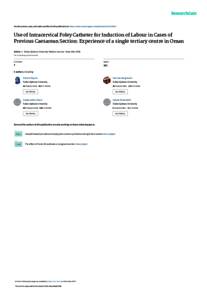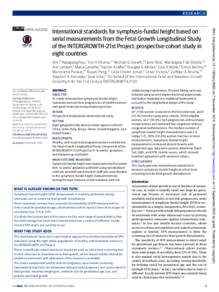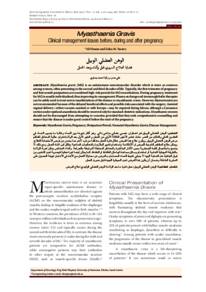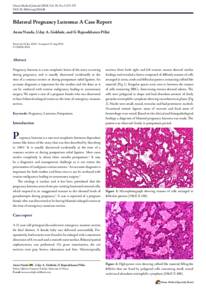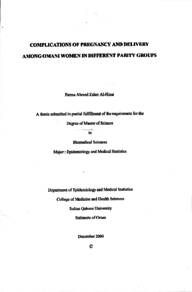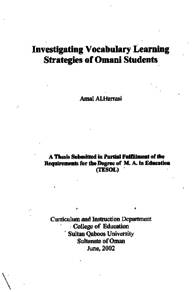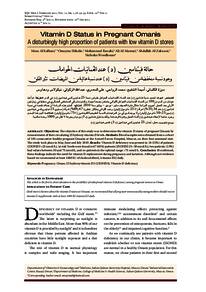Document
Use of intracervical foley catheter for induction of labour in cases of previous caesarean section : Experience of a single tertiary centre in Oman.
Identifier
DOI: 10.18295/squmj.2016.16.04.007
Contributors
Al-Riyamiyah, Nihal., Author
Al-Dughaishiyah, Tamima., Author
Gowri, Vaidayanathan., Author
Al-Azri, Mohammed., Author
Salahuddin, Ayesha., Author
Other titles
استخدام قثطار فويل داخل عنق الرحم لتحريض المخاض لحالات القيصرية السابقة
Publisher
Sultan Qaboos University.
Gregorian
2016-11
Language
English
English abstract
Objectives: This study aimed to evaluate rates of success and perinatal complications of labour induction using an intracervical Foley catheter among women with a previous Caesarean delivery at a tertiary centre in Oman. Methods: This retrospective cohort study included 68 pregnant women with a history of a previous Caesarean section who were admitted for induction via Foley catheter between January 2011 and December 2013 to the Sultan Qaboos University Hospital, Muscat, Oman. Patient data were collected from electronic and delivery ward records. Results: Most women were 25–35 years old (76.5%) and 20 women had had one previous vaginal delivery (29.4%). The most common indication for induction of labour was intrauterine growth restriction with oligohydramnios (27.9%). Most women delivered after 40 gestational weeks (48.5%) and there were no neonatal admissions or complications. The majority experienced no complications during the induction period (85.3%), although a few had vaginal bleeding (5.9%), intrapartum fever (4.4%), rupture of the membranes (2.9%) and cord prolapse shortly after insertion of the Foley catheter (1.5%). However, no cases of uterine rupture or scar dehiscence were noted. Overall, the success rate of vaginal birth after a previous Caesarean delivery was 69.1%, with the remaining patients undergoing an emergency Caesarean section (30.9%). Conclusion: The use of a Foley catheter in the induction of labour in women with a previous Caesarean delivery appears a safe option with a good success rate and few maternal and fetal complications.
Member of
ISSN
2075-051X
Resource URL
Arabic abstract
هدفت هذه الدراسة إلى تقييم معدلات النجاح والمضاعفات المحيطة بالولادة لتحريض المخاض باستخدام قسطرة فولي داخل عنق الرحم بين النساء اللاتي خضعن لولادة قيصرية سابقة في أحد المراكز الثالثية في عمان. شملت هذه الدراسة الاستعادية للأتراب على 68 امرأة حامل خضعت لإجراء عملية قيصرية سابقة وتم إدخالها للتحريض عن طريق قسطرة فولي بين يناير 2011 وديسمبر 2013 في مستشفى جامعة السلطان قابوس، مسقط، عمان. تم جمع بيانات المرضى من السجلات الإلكترونية وسجلات جناح الولادة. النتائج: كانت أعمار معظم النساء 25-35 سنة (76.5%)، وخضعت 20 امرأة لولادة مهبلية سابقة (29.4%). كان المؤشر الأكثر شيوعًا لتحريض المخاض هو تقييد النمو داخل الرحم مع قلة السائل السلوي (27.9٪). وضعت معظم النساء بعد 40 أسبوعًا من الحمل (48.5%) ولم تكن هناك حالات دخول أو مضاعفات لحديثي الولادة. لم تواجه الغالبية أي مضاعفات خلال فترة التحريض (85.3%)، على الرغم من أن القليل منهن تعرضن لنزيف مهبلي (5.9%)، وحمى أثناء الولادة (4.4%)، وتمزق الأغشية (2.9%)، وهبوط الحبل بعد وقت قصير من إدخال قسطرة فولي. (1.5%). ومع ذلك، لم تلاحظ أي حالات تمزق الرحم أو تفزر ندبة. بشكل عام، بلغ معدل نجاح الولادة المهبلية بعد ولادة قيصرية سابقة 69.1%، بينما خضعت المريضات المتبقيات لعملية قيصرية طارئة (30.9%). الاستنتاج: إن استخدام قسطرة فولي في تحريض المخاض لدى النساء اللاتي خضعن لولادة قيصرية سابقة يبدو خيارًا آمنًا مع نسبة نجاح جيدة ومضاعفات قليلة على الأم والجنين.
Category
Journal articles

